New Zealand (Part Two)
- Nicole Behm
- Aug 17, 2022
- 13 min read
On our way back into Queenstown Nicole found a campsite (Spaceships, our rental agency, had a cool app full of campsites and other great info) that was a little unique. It was actually in the parking lot of a hotel with an attached bowling alley. The deal was that for $20 NZD ($12.50 USD), you could park in the lot and use their facilities until closing time. And to top it off they would throw in a free pizza! It turned out to be a great deal as even the cheap campsite that we had stayed in had cost $30 NZD the other night in Queenstown. We started the follow day venturing into Queenstown to restock camping supplies and do just a bit more planning. We couldn’t really do anything else as we were waiting for our afternoon activity that day: Bungee Jumping!
Queenstown is known as one of the adventure capitals of the world, and it’s actually where bungee jumping was invented. In 1988 a guy attached a homemade rubber cord to himself and jumped off the Kawarau Bridge. Not long after a jump spot was opened up right there. We decided that there was no better place to do it. The weather had been crappy all day but opened up to clear skies for our jumps at 3pm. We were both freaking out (Kyle more so, he’s terrified of heights). The workers were really cool and talked us through it all, and even tried to align the cord to see if they could dip you in the river below (which we’re still not sure if we would have wanted during winter time). When it’s your turn they strap you up and slowly walk you to the ledge, where you stand with your toes just barely hanging off. After a 5 second countdown you jump…and then spend a few seconds contemplating all of the bad decisions you have ever made in your life before the bungee finally catches you…and brings you almost all of the way back up before you continue to drop and rebound several times. Finally a boat comes out to pull you in. The experience was exhilarating for both of us! It is such an adrenaline rush that it’s hard to even remember what happens in the moment, the best kind of blackout! We celebrated our survival with a beer as we watched other jumpers take the plunge.
With hearts ponding and legs shaking, we set off up the Crown Range Road to a campsite just outside Wanaka (Albert Town campground). We made dinner and played some card games (extra chocolate to the winner!) before heading to bed early ahead of our longest hike of New Zealand yet: Roy’s Peak, a 10-mile round trip with 4,200 feet of elevation gain. The hike is one of the most popular on South Island, as one of the best views is from the Roy's Peak lookout that resides about three quarters of the way up. Many people hike to that point and spend an hour or two trying to get their perfect picture of the landscape below. Much fewer people actually go to the peak, but that's what we wanted to do. The hike was on a well-marked, well-worn, and wide trail through sheep fields all the way to the lookout. Closer to the lookout area we started to tramp through our first section of snow. When we got there, there were a few people taking photos but we were able to get a couple together (it really was a spectacular photo spot) before proceeding to the top. There were just a couple of other people headed that way, and we did have to fight through a mile of knee-deep snow and some wind gusts, but the views from the top were well worth it. The chill forced us to go back down to the lookout quickly, where we stopped for lunch and a celebratory beer. Since we had not spent much time there on the way up, Nicole went to get a few more photos of the landscape, but there was a family on the lookout point taking photos. After waiting 40 MINUTES for them (they went through outfit changes and a million different poses), we finally just butted in to snap a couple before speeding back down the mountain to the warm, sunny valley below. It ended up being one of our favorite hikes of the trip and we're glad we did it in winter to keep the crowds down, with the added bonus of scenic snow-capped mountains in the distance everywhere we looked.
We really loved the town of Wanaka, which was a smaller, much-less-busy version of Queenstown. It had cool cafes and bars and was beautifully set on the lakeside. One of it's major attractions, however, is called "That Wanaka Tree," which is an oak tree growing about 30 feet off of the shore. It is one of the most photographed spots in New Zealand, but it's very tacky...so of course we stopped for some great pictures (this was actually before the hike). Although we wish we would have had a little more time in the town, and next time we certainly will spend more time here, we decided to make a push ahead to the next campground. On our way we stopped at the Blue Pools, just an hour north of Wanaka. There was a simple 1-mile hike to see them, although the sun had already set on an overcast day so we didn't see their famous blue hue. From there we continued on through the Haast Pass toward our camping spot at Lake Paringa. It was probably a mistake to drive this stretch at night, as it is a narrow and winding road that is often closed in winter for various reasons including flooding, landslides, and icy conditions. It was a stressful couple of hours, but we made it to our next campsite: the parking lot of a salmon farm/café, which was free! To de-stress, we decided to break into our mulled-wine supply (from the syrup we had bought at Mt Rosa) which paired well with warm pasta from the camp stove. As a courtesy, we stopped in the café in the morning and it turned out to be a nicely-decorated, warm and inviting place with a full coffee, tea, and light snack menu. We grabbed a pot of tea and warmed ourselves by the wood-burning stove. On our way out, we were given some fish food to throw to the salmon below. When the food hit the water they went crazy and jumped all around fighting each other for it.
From there we continued onward up the West Coast, with long stretches along the the coastline with waves beating against the shore, mixed with some inland diversions through low-lying farmlands. The West Coast is the less-trodden, more blue collar side of New Zealand, and an area that was once hit with a booming gold rush. The landscape here changes from sweeping plains/mountains to more of a rainforest. There is a lot of less explored and less developed things to do, although we did not have the chance to do much of it. We did hit some of the major attractions including the Fox Glacier and the Franz Josef Glacier. Both were short, well worn tramps. What made them unique, though, was they were two of the very few glaciers in the world that penetrate subtropical rainforest! The walking paths were through lush forest with thick trees, some of the palms, and ferns before bursting out into glacial riverscape with views of the glaciers in the background. After the glacier jaunts, we continued on to Arthur's Pass National Park. As it was getting dark, the winding roads seemed more ominous. We began to spot some bird like creatures along the side of the road and got SUPER excited that we may have seen some of the elusive kiwis of New Zealand. We camped at a spot right outside the Park's visitor information center, where we ducked out of the wind gusts to make dinner. This site included signs warning of swarming keas (mountain parrots) that had been grabbing campers' food supplies and even breaking into tents. Sure enough while we were cooking dinner (that included brussels sprouts, which was an odd choice on our part for camping food but they were on sale), we could hear and see them squawking in the trees above us. We woke up early the next morning to do a simple walk to the Devil's Punchbowl waterfalls, which actually were really cool. We had been kind of jaded on waterfalls as a whole after starting the trip in Iceland. Honestly, after then it's been tough to have any waterfall live up to expectations, but this one certainly did. We went from the waterfall back to the information center, which had just opened, to ask the ranger about a couple of nearby hikes. We wanted to do the (ominously named) "Avalanche Peak" hike, but he nonchalantly stated that the recent warm rains made avalanches pretty likely, and that the winds at the top were supposed to be hurricane force but that we could start it and turn around when we were uncomfortable. We wisely asked what other trails he would recommend, and he pointed us to the Bealey Spur track, which was a fairly difficult 8.4 mile out and back with some snow at the top.
It ended up being a being a gorgeous hike, with open vista views of the merging river valleys below and just a bit of snow to break few for the last 1.5 miles. The hike ends at a mountain hut (called Bealey Top Hut). This was our first encounter with one of, in our opinion, New Zealand's best features: backcountry huts. The country has over 900 of these scattered along hiking routes. They are welcome for anyone to use and feature bunkbeds, fireplaces/woodstoves, and emergency gear. Anyone who uses them are expected to share space, replenish the wood supply (this can even mean going out into the forest to cut trees and split firewood!), and keep the spaces tidy. It's a wonderful concept, and makes multi-day treks much more doable, as you can plan your excursion around hut stops. The huts themselves are a combination of modern, Department of Conservation maintained facilities and old hunting/trapping/musking huts built by early settlers. We stopped for a peaceful lunch out of the wind at this one, and enjoyed reading the names/notes that people had written on the walls (some as long ago as 1963!). The way down was smooth and easy, and we stopped once again near the visitor center to use the indoor cooking space at the campsite to make some soup (Thai Pumpkin, if you find a can of this anywhere GET IT). After lunch, we drove right back out to the West Coast and set up camp at the Rapahoe Bay Holiday Park. This was our first time splurging ($20 NZD per person) on a Holiday Park. There is one of these in nearly every town with campsites. They are basically just a place to park with a few more facilities that the cheap and free sites are missing, including hot showers, kitchen and lounge space, and drinkable water spouts. We were over a week into New Zealand at this point, with several long sweaty hikes, and we were in desperate need of a shower so the splurging decision wasn't really too hard.
After freshening up we felt ready to be seen in public, so we went to the Monteith's Brewery. Monteith is one of the most well-known New Zealand brewers, and they had a great tap selection. We stopped for a couple of beers in the really cool space (we definitely snagged a spot by the fire) and enjoyed a split plate of fries (after a week of camp-food, the fries tasted like the best ever).
The next day we completed our drive up the west coast and headed inland and up to the northern portion of South Island. We stopped for a coffee and passionfruit/white chocolate/macadamia muffin (wow, we're really spoiling ourselves now) at a café in Montueka, just outside of Abel Tasman National Park. From there we continued into the park, where we booked a spot for the night at another holiday-park-like place called The Barn. It was cheaper ($14 NZD per person), had great facilities, and we had some cool people in the lounge space to talk to (we were mainly avoiding the rain, it had downpoured all day long). From here it was just a 5 minute walk to the start of one of New Zealand's famous Great Walks: The Abel Tasman Coastal Trek. New Zealand has 9 of these multi-day routes (most with a recommended hiking duration of 3-5 days). Most of them were closed for winter or booked out (you have to book huts and campsites ahead of time on these), but this one was still wide open. We had planned on doing the 35 mile trek in 3 days, starting in the town of Marahau. The only complication was that the hike was one-way, and we didn't have any transportation on the other end (the public transport and shuttle services shut down for winter). We were hoping to hitchhike out, or meet people along the way who could help us out (we had read that people often do "key swaps" and bring one vehicle to the other's location). We started bright and early the first morning and cruised 13 miles into Bark Bay Hut. The weather forecast had shown rain all 3 days, but again we lucked out. The sun was shining all day. The trek was definitely different than the others we had done in New Zealand. This one traced the tropical, coastal cliffs, dipping down periodically onto beaches. We stopped for lunch at one of these, but otherwise we didn't need to many breaks as the walk was fairly easy. At one point we had to make a "low-tide crossing." There are a couple of these along the way. You have to either time up your crossing correctly, or take a long diversion along the highland track. Tide charts had become our friend, so we had timed it correctly and were able to cut a couple of miles off.
When we arrived at Bark Bay, there was a dad and son who had stayed there the night before who were packing up to leave. We struck up a conversation and the son (maybe 7 years old?) begged to take us seashell hunting. The dad clearly needed a break from his energetic kid (he had him sweeping floors before we got there), so we happily obliged and spent the next hour hunting cool shells. We went back and got some random wood-whittling tips from the dad and he finally identified the birds we originally hoped he been kiwis as wekas - and we continued to see a TON of them, before they set off to catch their boat ride back to the start. From there on, we had the entire 34-bed Bark Bay Hut to ourselves.
This was good and bad. The good was that we had a peaceful night, and we were able to move our mats and sleeping bags out to the common room wood stove. The bad was that we did not meet anyone headed our way, or the opposite way, to help arrange transport. As we became more and more worried, we decided to change up our plan: rather than continue onward, we would retrace our steps back the following day and stop one more hut behind us. This strategy made us much more comfortable as we knew that we could safely make it back to our vehicle, while still getting in good hiking days. We spent the evening splitting wood and reading books with the peace of mind of knowing we would be in good shape the rest of the way.
We decided to sleep/read late into the morning the next day as we just had a short (8 miles, via the high tide diversion and side trek to the Cleopatra Pools) hike back to the Anchorage Hut. This is the most popular hut across the whole trek but it still only had one other stayer, a guy named Pete. We struck up a conversation with him over dinner (food on the trek, by the way, was mostly dehydrated camping meals), and continued trading travel stories and photos of home projects well into the night. He had recently completed one of Kyle's dream projects: building an outdoor pizza oven! It completely re-kindled Kyle's desire to do it...so watch out fall 2022, we may have our next big project coming. In addition to Pete, there was a hilarious campsite manager that came over and gave us a hard time about switching our booked huts, before sharing funny stories from past campers and leaving us with a roaring fire in the stove to warm us before bed. It was another 8 miles back to the trailhead in the morning, and we had beautiful weather for it. We showered when we picked up our vehicle from The Barn, and continued eastward along the northern coast (we were both craving another muffin from the same café we had stopped at, so Nicole was hyped when Kyle pulled into the parking lot before we made it out of town. This time the muffin was blueberry, cinnamon, and chocolate chip).
We came to a road closure sign at one point which would have caused a 3-hour detour, but a worker flagged us down in time to let us know that they had just opened the road 5 minutes ago. A little later on, we were waved down by a lady who said she needed help rounding up some horses that got loose on the highway. We spent the next 15 minutes using our van, along with her and another vehicle, to safely move the horses to a patch of land away from the road. We also passed many stands on the side of the road selling produce and local products - so we us to stop and get some local honey! After that we headed into the Marlborough region, which was full of vineyards that make New Zealand's famous Sauvignon Blanc wines.
Nearly every patch of land was covered with grape vines, and in between all of these there were sheep grazing. We finished up our drive in Picton, where we stopped for fish and chips with a pint of Guinness. It was just a short drive from there to a free campsite, where we spent the night. Note here that on several of these nights we watched The Lord of the Rings on Nicole's computer in the van. We were both watching these and reading the books during our time in New Zealand. The entirety of the trilogy was shot here, and it was fun to match up the landscapes we had seen with the shots from the movies.
We spent the following day in Picton catching up on blogging, doing laundry (our hiking clothes were pretty gross at this point), restocking groceries, and giving the van a good cleaning. Our ferry to the North Island was delayed by 3 hours, so we had a little extra time to hit a café.....and to hunt for some mussels from the bay. New Zealand has an endemic mussel species, the Green-lipped mussels, that are famous and can be plucked right from the ocean in this region. We didn't find any of these, but there were plenty of standard blue mussels. We picked a few of these off of the rocks and set them in the fridge to be cooked for dinner when we finally made it to North Island. We were a little sad to be leaving the wonderful scenery of South Island, but excited all the same!

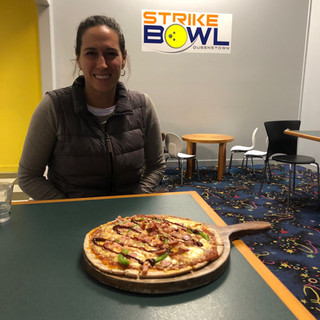































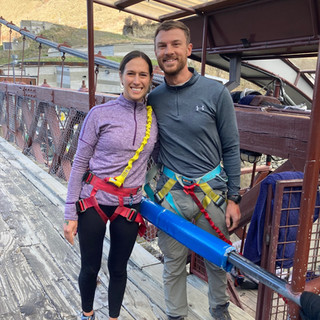














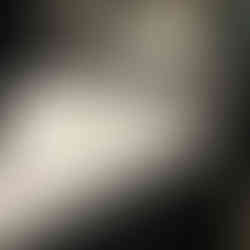






























































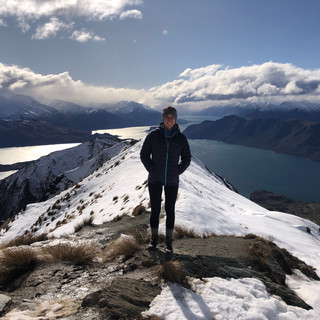
















































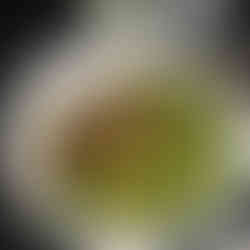




















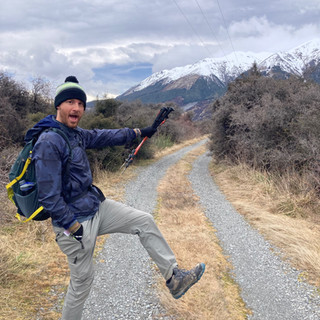


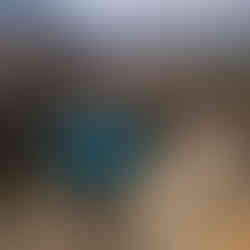


































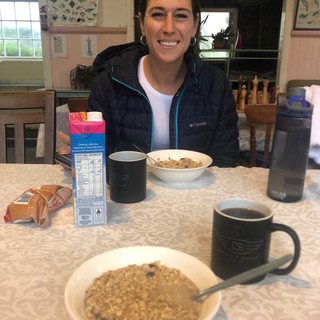




















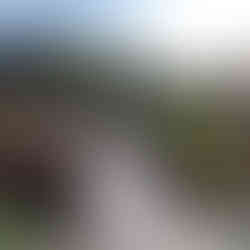








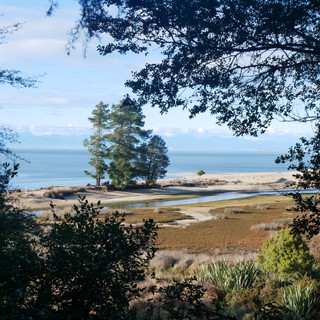


















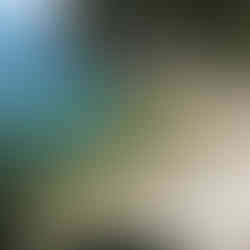






























































































































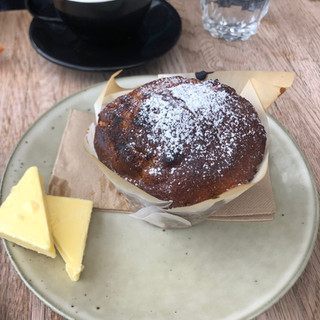





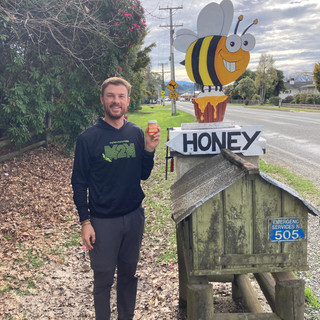

























Comments